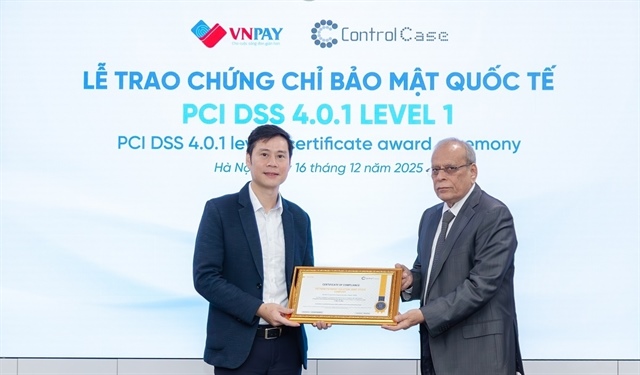Deposit interest cap reignites rate war among banks
Deposit interest cap reignites rate war among banks
Following the sharp cut in the deposit interest rate ceiling to 8 per cent, a fierce battle to retain deposits has broken out between banks, with many resorting to illegally offering higher rates.

The State Bank of Viet Nam reduced the cap from 9 per cent in an attempt to bring down loan interest rates and spur economic growth, which is forecast to plummet to levels not seen in more than a decade.
But independent analysts said the central bank's move places a hurdle before banks' efforts to retain existing depositors and attract new ones.
Since the rate was cut, many people have been withdrawing their money from banks and investing in other asset classes like property and foreign currency, the analysts said. Small banks are particularly struggling.
Consequently, many lenders have been breaching the rate cap. Some small banks are offering 10 to 12.5 per cent for deposits of VND1 billion or more and with terms ranging between one and three months, while others are offering gifts and cash incentives.
For example, some banks officially offer 8 per cent as regulated, but pay customers the difference between that rate and higher rates in cash.
Hoang Thanh Phong in HCM City's Tan Binh District said that when he brought VND2 billion to a commercial bank in the district, a bank employee told him that by depositing the money for a three-month term, he could enjoy an annual interest rate of 12.5 per cent.
To retain existing depositors, some commercial banks are offering an interest rate of 10 per cent per year for deposits with terms of one and three months.
The banks give depositors savings books with an interest rate of 8 per cent per year, as regulated. But when a customer makes a deposit, the bank subtracts the difference between the regulated interest rate and the offered bank rate and gives the customer an amount of cash equivalent to the difference.
Although this practice is illegal, it is difficult for inspectors to uncover.
A few months ago, when the savings interest rate was capped at 11 per cent and then 9 per cent, many banks offered 14 and 15 per cent, then 12 and 13.5 per cent. Although some were punished severely by the central bank, this did not deter their competitors.
Nguyen Hoang Minh, deputy director of the State Bank of Viet Nam's branch in HCM City, admitted that capital mobilisation was of vital importance to commercial banks, particularly in the last months of the year when customers' capital demands were increasing sharply. Therefore, banks that did not offer the highest interest rates would not be able to compete.
Truong Van Phuoc, general director of Eximbank, told Dau Tu newspaper that his bank achieved a satisfactory rate of mobilised capital in 2012, while its credit growth was minus 6 per cent. Although the bank maintained the regulated deposit interest rate, Phuoc said the central bank should consider lifting the deposit interest rate cap so the lending interest rate could be lowered to the rate expected by enterprises.
With the new deposit interest rate cap, most small banks would find it difficult to compete with major banks in mobilising capital, according to a chairman of a commercial bank in the city.
The former SBV governor Le Duc Thuy said that inflation in 2012 was controlled at 6.81 per cent, so the 8 per cent deposit interest rate cap was reasonable. He acknowledged, however, that breaching the cap was an all-too-common phenomenon.
vietnamnews



























